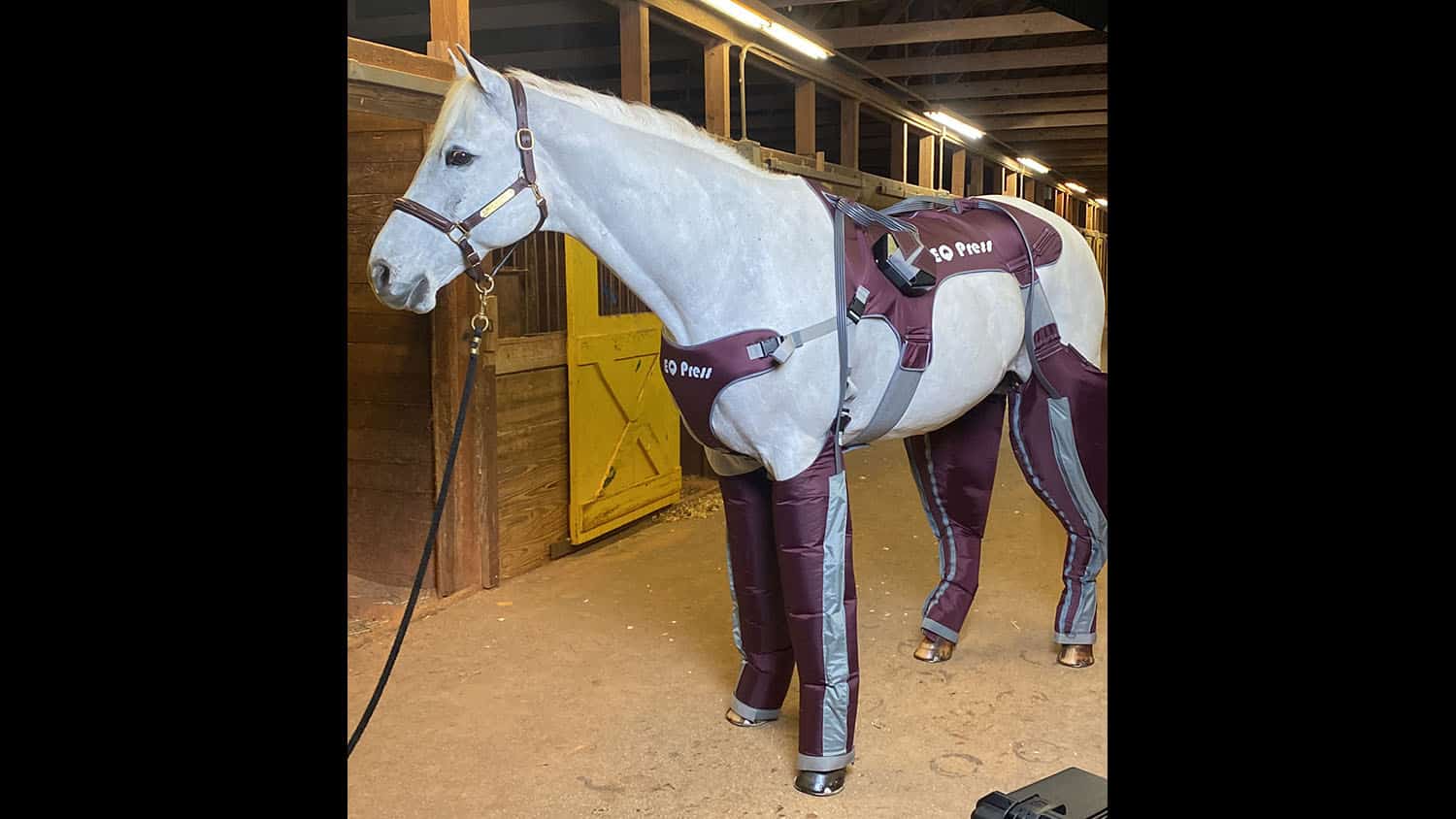Researchers have adapted technology for humans with lymphedema for horses, in hopes of treating them for the same condition.
Lymphedema is the accumulation of excess lymph fluid which causes swollen limbs. In a pilot study the device, called the EQ Press, successfully moved fluid up the horses’ limbs and into the lymph nodes. This could lead to relief for horses with chronic conditions, as well as with temporary swelling due to injury or inactivity.
“Across the board, horses are predisposed to lower limb swelling,” says study coauthor Lauren Schnabel, associate professor of equine orthopedic surgery at North Carolina State University, and co-founder and chief medical officer of Vetletics, Inc., the company that manufactures the EQ Press.
“Lymphatic flow is driven by muscle contractions that circulate lymph fluid through the lymphatic system—horses are prone to lymphatic issues because they have very little musculature in the lower limbs.”

The severity of the condition can vary widely—from temporary swelling due to curtailed mobility, to lymphangitis caused by infections that can scar the lymphatic system. Owners will usually treat the condition by wrapping the limbs and icing them while encouraging exercise. But the effects of these treatments are usually only temporary.
“Humans suffer from the exact same type of lymphedema horses do, but the difference is that human medicine has a very effective treatment option—pneumatic compression devices,” Schnabel says. “So we wanted to create a horse-specific version of those devices and see if it would be similarly effective.”
Working closely with a company that manufactures human pneumatic compression devices, Schnabel developed the EQ Press in collaboration with former NC State veterinary student Irina Perdew.
The full EQ Press system comprises custom garments designed to accommodate the front and rear limbs of horses. Powered by pumps that tuck into a saddle pad, the device creates cycles of dynamic pressure waves that start at the bottom of the limb and move up, forcing fluid up the limb and eliminating backflow.
“There was anecdotal data that indicated compression treatment worked well for horses, but we wanted scientific evidence that demonstrates the utility of pneumatic compression for such large animals,” Schnabel says. “So we designed the NC State pilot study.”
In the study, six healthy thoroughbreds were injected with a tracer isotope in their lower front limbs—a harmless sulfur colloid that is taken up and excreted through the lymphatic system. A specialized camera followed the progression of the isotope up the lymphatic system and into a lymph node in the upper limb, a process known as lymphoscintigraphy.
Each horse underwent lymphoscintigraphy twice—once with treatment by the EQ Press on the front limbs and once without—randomized between treatment and control.
In all of the EQ Press treated horses, the camera showed the tracer isotope moving from the lower limb to the lymph node in the upper limb within a 60-minute window. Of the control horses, only one showed that the tracer isotope was able to reach the lymph node.
Overall, EQ Press treated horses had significantly accelerated lymphatic flow compared to untreated horses, recorded as both time to move out of the lower limb and also as time to reach the lymph node in the upper limb.
Schnabel and the research team find the results encouraging and want to determine whether pneumatic compression treatment will be as helpful for horses as it is for humans.
“Now we have compelling evidence that pneumatic compression treatments can accelerate lymphatic flow in healthy horses,” Schnabel says. “Our next step is to study the effectiveness of the EQ Press for treatment of horses with medical conditions such as lymphedema.”
The study appears in the American Journal of Veterinary Research.
Source: NC State



